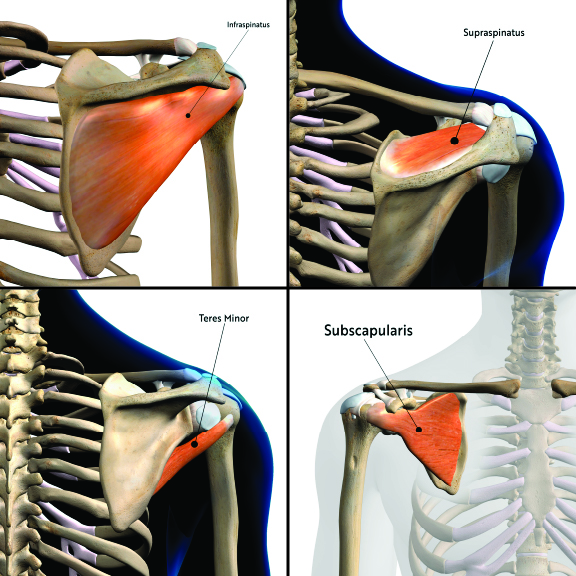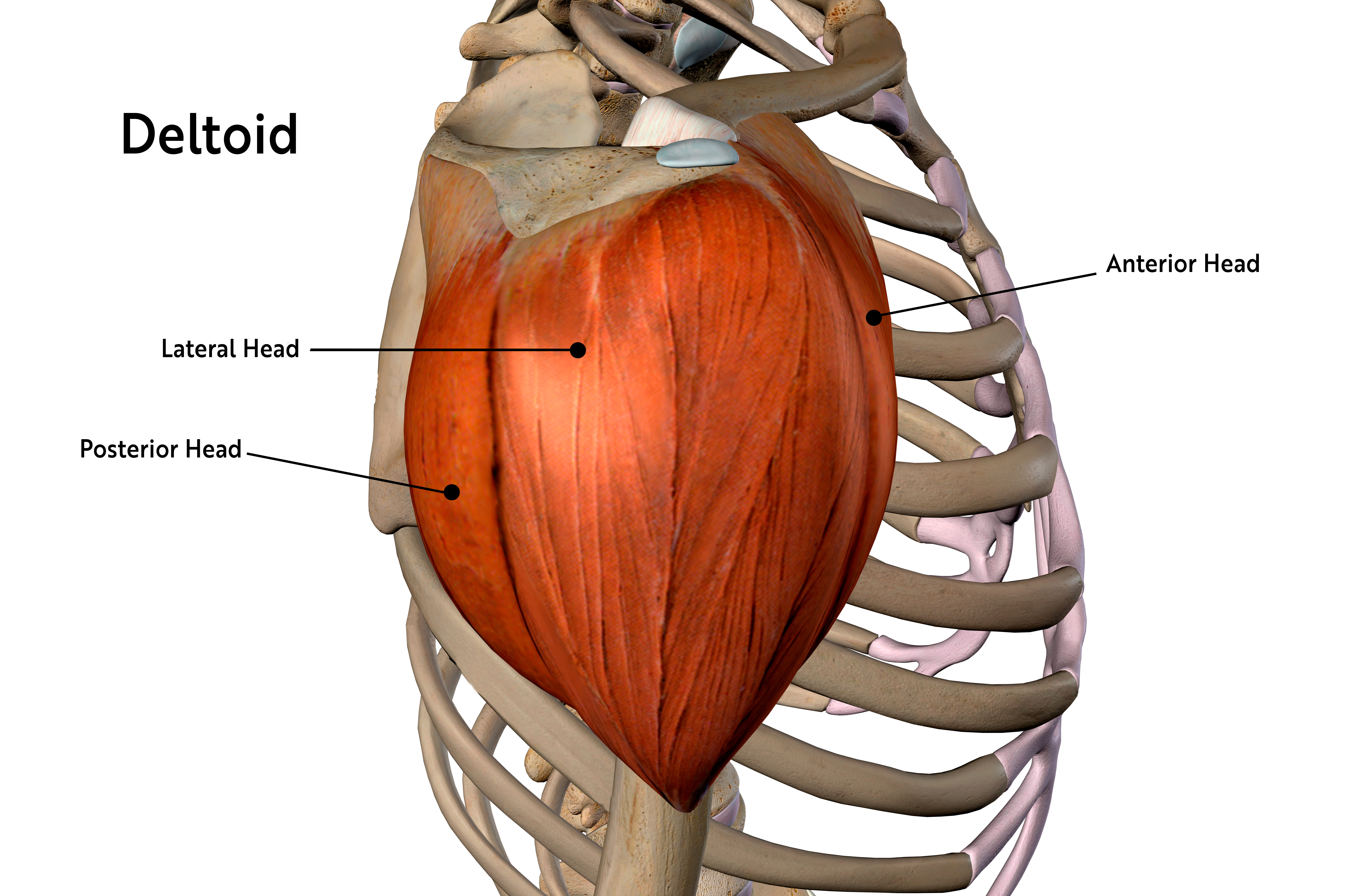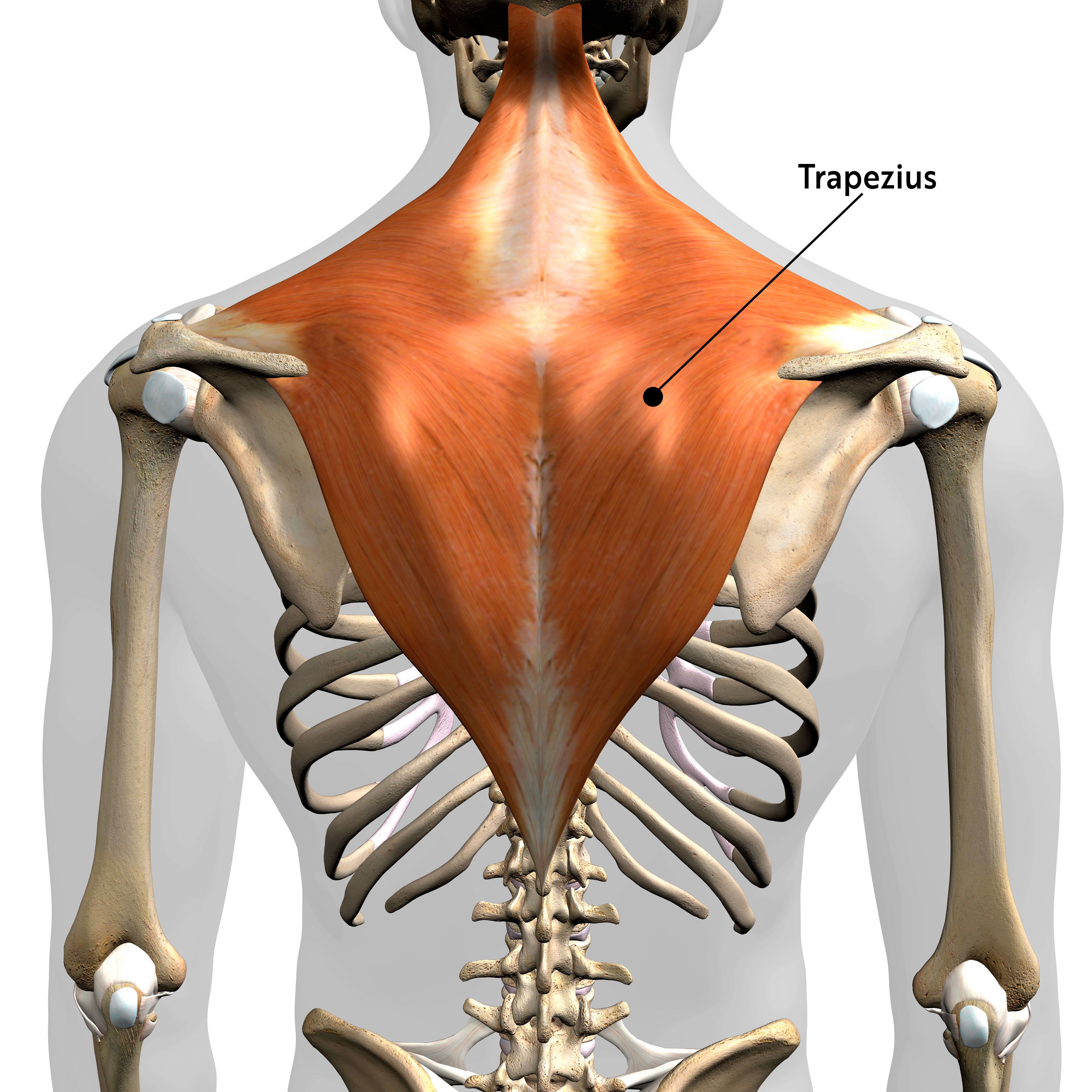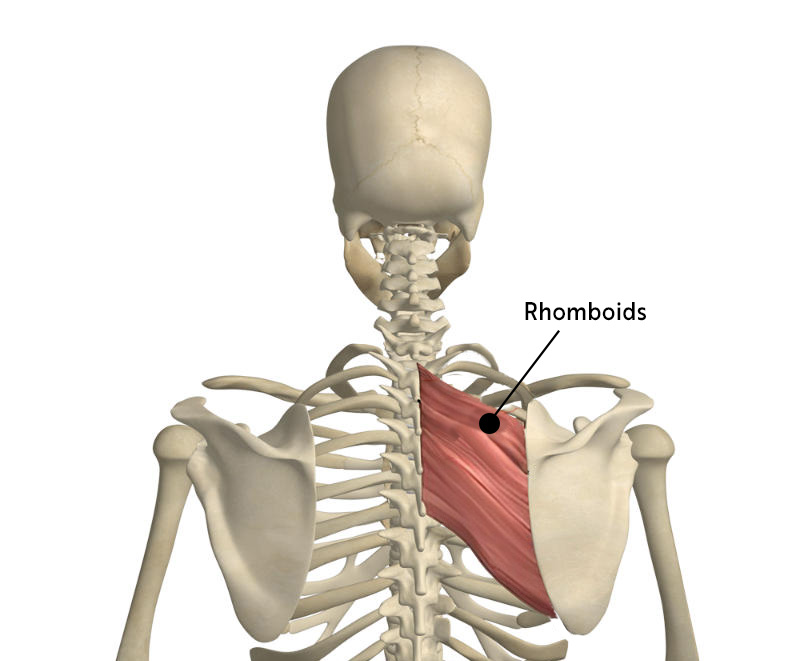The shoulder is one of the most complex joints in the human body and has the largest range of motion among all other joints. This intricate structure is comprised of several key components, including bones, muscles, tendons, ligaments, and eight distinct planes of motion. Let’s take a deep dive into each of these components to gain a better understanding shoulder anatomy.
Bones of the Shoulder Anatomy
The shoulder is primarily made up of three bones: the humerus (upper arm bone), scapula (shoulder blade), and clavicle (collarbone). These bones work together to provide stability and mobility to the shoulder joint.
– Humerus: The humerus is the long bone in your arm that extends from the shoulder to the elbow. Its rounded head fits into the shallow socket of the scapula, forming the ball-and-socket joint of the shoulder that allows the shoulder to have a 360 degree range of motion.
– Scapula: The scapula is a triangular-shaped bone located on the upper back. It provides attachment points for several muscles and forms the back part of the shoulder socket.
– Clavicle: The clavicle is a long, S-shaped bone that connects the scapula to the sternum (breastbone). It helps to support the shoulder and allows for a wide range of motion.
Together, these bones create the Glenohumeral Joint and the Acromioclavicular Joint.
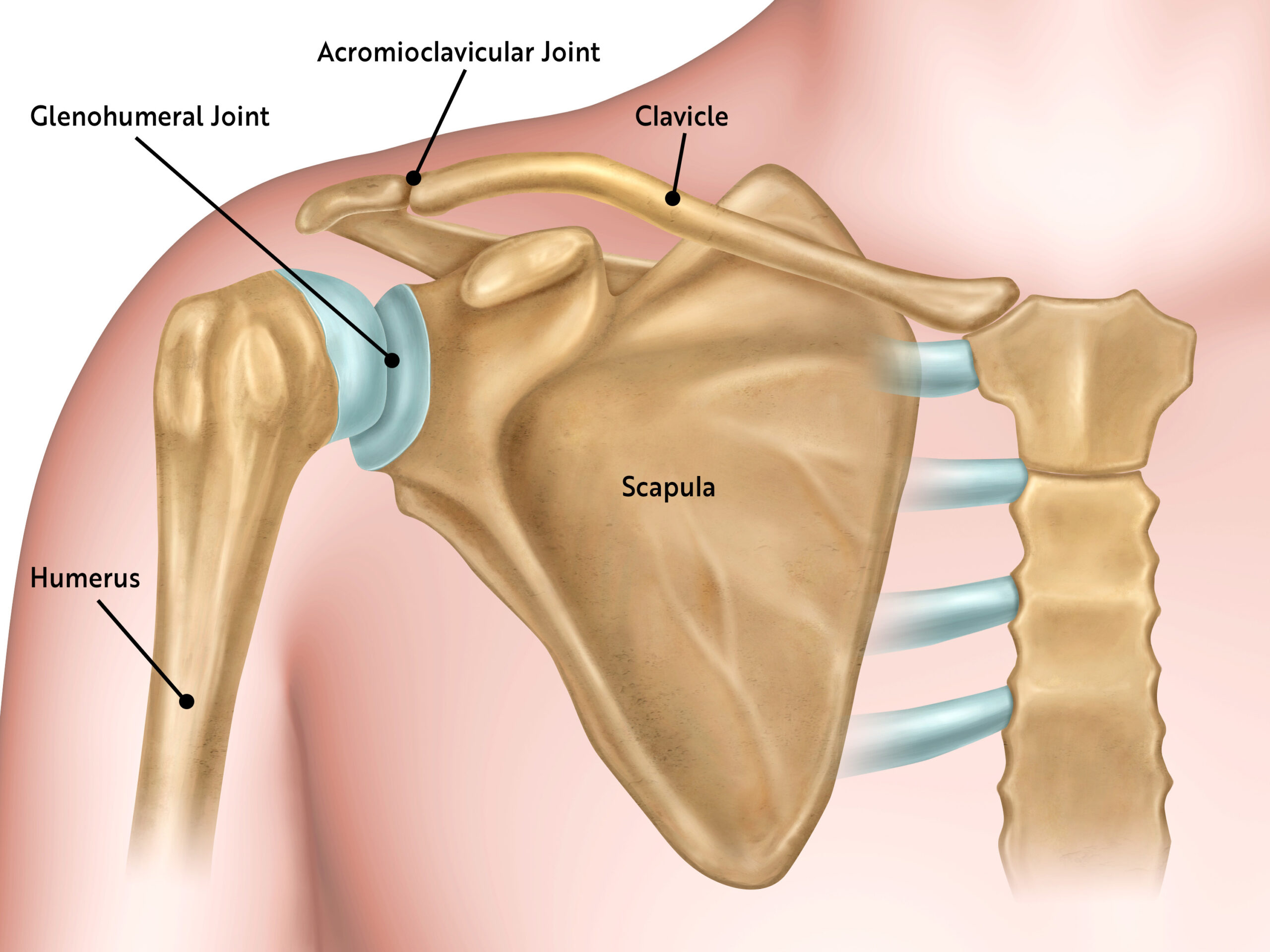
Muscles of the Shoulder
The shoulder is supported by a group of muscles known as the rotator cuff, along with several other muscles that help to stabilize and move the shoulder joint.
– Rotator Cuff Muscles: The rotator cuff is made up of four muscles: the supraspinatus, infraspinatus, teres minor, and subscapularis. These muscles work together to stabilize the shoulder joint and facilitate rotational movements. An example of an external rotational movement would be the backstroke when swimming. As the swimmer’s arm moves out of the water and rotates back into position for the next stroke, the shoulder is externally rotating. Alternatively, during a front crawl / freestyle stroke in swimming, when the swimmer’s arm exits the water and moves forward to re-enter the water, the shoulder internally rotates. Give this a shot as you’re reading this blog and notice the natural change in direction your hand takes as your shoulder moves through these motions.
– Deltoid: The deltoid is a large triangular shaped muscle that covers the glenohumeral joint. It is responsible for lifting the arm and giving the shoulder its rounded shape. This muscle can be divided into three heads: the anterior head, lateral or middle head, and the posterior head, each of which originate from the clavicle or scapula, and connect to the humerus.
– Trapezius: The trapezius is a large muscle that extends from the neck to the middle of the back. It helps to stabilize and perform many movements of the shoulder such as elevating and depressing the shoulders and internally and externally rotating the arm.
– Rhomboids: The rhomboids are two muscles located in the upper back that aid in retraction of the shoulder blades.
– Pectoralis Major: The pectoralis major is a large muscle located in the chest that helps to flex, rotate, and move the arm towards the midline of the body.
Tendons and Ligaments in Shoulder Anatomy
Tendons are tough, fibrous tissues that connect muscles to bones, while ligaments are thick, fibrous bands that connect bone to bone. Tendons and ligaments work together and play crucial roles in providing stability to the shoulder joint:
– Rotator Cuff Tendons: The tendons of the rotator cuff attach the rotator cuff muscles to the humerus and stabilize the shoulder joint during facilitated movements.
– Ligaments of the Shoulder: The shoulder joint is supported by several ligaments, including the glenohumeral ligaments, the coracoclavicular ligament, and the acromioclavicular ligament. These ligaments help to reinforce the shoulder’s stability and prevent injuries such as a dislocation.
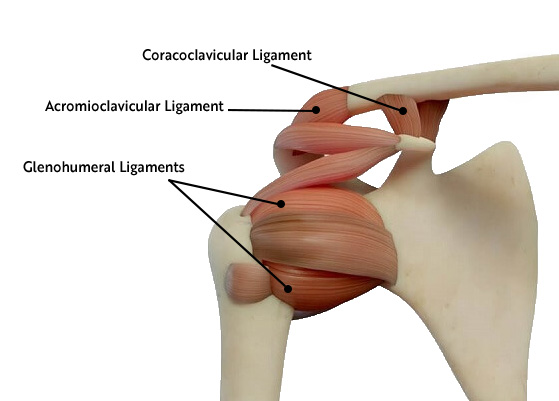
Shoulder Planes of Motion and Movement Patterns
As mentioned, the shoulder joint is capable of an impressive range of motion and movement in multiple planes. The primary planes of motion of the shoulder include:
– Flexion and Extension: Flexion is the action of bringing the arm forward, while extension moves the arm backward. An example of this is when you are running, the motion you perform with your arms is flexion and extension of the shoulder.
– Abduction and Adduction: Abduction raises the arm away from the body, while adduction brings the arm toward the body. Think of when you perform a jumping jack, when you raise your arms over head, you are performing abduction of the shoulder. When you bring your arms back down to your sides, you are performing adduction of the shoulder.
– Internal and External Rotation: Internal rotation involves rotating the arm inward, while external rotation involves rotating the arm outward.
– Horizontal Abduction and Adduction: Horizontal abduction is the movement of moving the arm away from the midline of the body, while horizontal adduction is the movement of bringing the arm back toward the midline. Think of opening your arms to hug a loved one, that is horizontal abduction of the arms. When you hug your arms around that person, this motion is horizontal adduction.
The shoulder’s intricate structure of bones, muscles, tendons, and ligaments makes it an incredibly impressive joint, essential for many daily activities and athletic pursuits. However, this same complexity also makes the shoulder susceptible to numerous injuries. Understanding the components and movement patterns of the shoulder is crucial for maintaining its health and preventing potential issues.
Learn more about the shoulder and the different treatment options available for many common injuries and conditions by visiting our blog page
If you or a loved one are experiencing shoulder pain that just won’t go away, give us a call. Our experts are all fellowship trained, board certified, and equipped to help you get back to the things you love to do as efficiently as possible.
